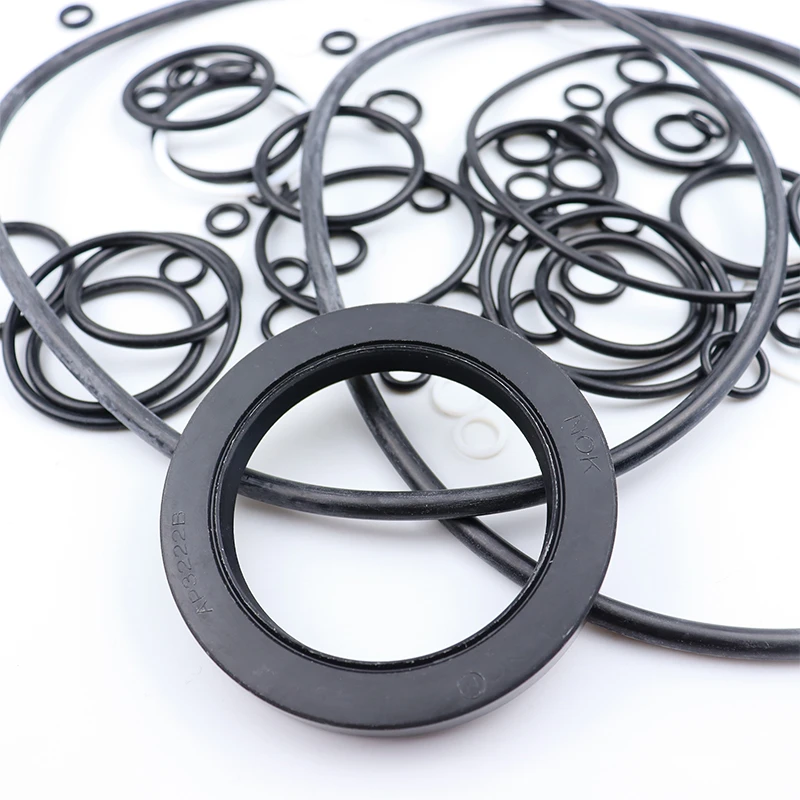Oct . 17, 2024 03:46 Back to list
single acting piston seal
Understanding Single Acting Piston Seals Function and Importance
In the realm of hydraulic and pneumatic systems, seals play a crucial role in ensuring the efficiency and longevity of equipment. Among various sealing solutions, single acting piston seals are widely utilized. These seals are specifically designed to maintain pressure in one direction while allowing for movement in the opposite direction. This article delves into the characteristics, advantages, and applications of single acting piston seals.
What are Single Acting Piston Seals?
Single acting piston seals are engineered for use in hydraulic cylinders and pneumatic applications where pressure is exerted in one direction. Unlike double acting seals, which can seal in both directions and accommodate pressure from either side, single acting seals perform their sealing function only when pressure is applied from one side. This design is particularly beneficial in systems where space is at a premium or where the simplicity of the design can enhance the overall efficiency of the mechanism.
Design and Materials
Single acting piston seals are typically made from a variety of materials, including elastomers, plastics, and metal compounds, depending on the specific requirements of the application. Common materials include polyurethane, nitrile rubber, and PTFE, each offering distinct properties suitable for diverse environments. The design of these seals is also critical; often featuring a lip that presses against the piston or cylinder wall to create a tight seal when pressure is applied. The profile of the seal must be carefully designed to minimize leakage while allowing for the necessary movement.
Advantages of Single Acting Piston Seals
single acting piston seal

One of the primary advantages of single acting piston seals is their simplicity. As they are designed to function in one direction, they often require less complex installation and maintenance compared to their double acting counterparts. This can lead to reduced downtime and lower overall operational costs. Additionally, their design enables a more efficient sealing solution in applications where pressure is only necessary on one side, preventing undesirable wear that could occur with more complicated systems.
Another benefit is their effectiveness in applications involving dynamic sealing, where the piston is in constant motion. The appropriate design and material choice can significantly reduce friction between the moving parts, thereby enhancing the lifespan of both the seal and the equipment.
Applications
Single acting piston seals are utilized in a wide range of applications, including hydraulic cylinders in construction equipment, pneumatic tools, and automotive systems. They are indispensable in situations where space constraints and the need for efficient motion management are paramount. Furthermore, they are commonly found in industries like manufacturing, aerospace, and automotive, showcasing their versatility and reliability.
Conclusion
In conclusion, single acting piston seals are vital components in various industrial and mechanical systems. Their ability to effectively seal under dynamic conditions while simplifying installation and maintenance processes makes them a preferred choice in many applications. As technology continues to advance, the development of materials and designs for single acting piston seals will undoubtedly enhance their performance and expand their use in future innovations. Understanding their functionality and benefits is essential for anyone involved in the design or maintenance of hydraulic and pneumatic systems.
-
TCN Oil Seal Metal Ring Reinforcement for Heavy Machinery
NewsJul.25,2025
-
Rotary Lip Seal Spring-Loaded Design for High-Speed Applications
NewsJul.25,2025
-
Hydraulic Cylinder Seals Polyurethane Material for High-Impact Jobs
NewsJul.25,2025
-
High Pressure Oil Seal Polyurethane Coating Wear Resistance
NewsJul.25,2025
-
Dust Proof Seal Double Lip Design for Construction Equipment
NewsJul.25,2025
-
Hub Seal Polyurethane Wear Resistance in Agricultural Vehicles
NewsJul.25,2025
-
The Trans-formative Journey of Wheel Hub Oil Seals
NewsJun.06,2025
Products categories
















